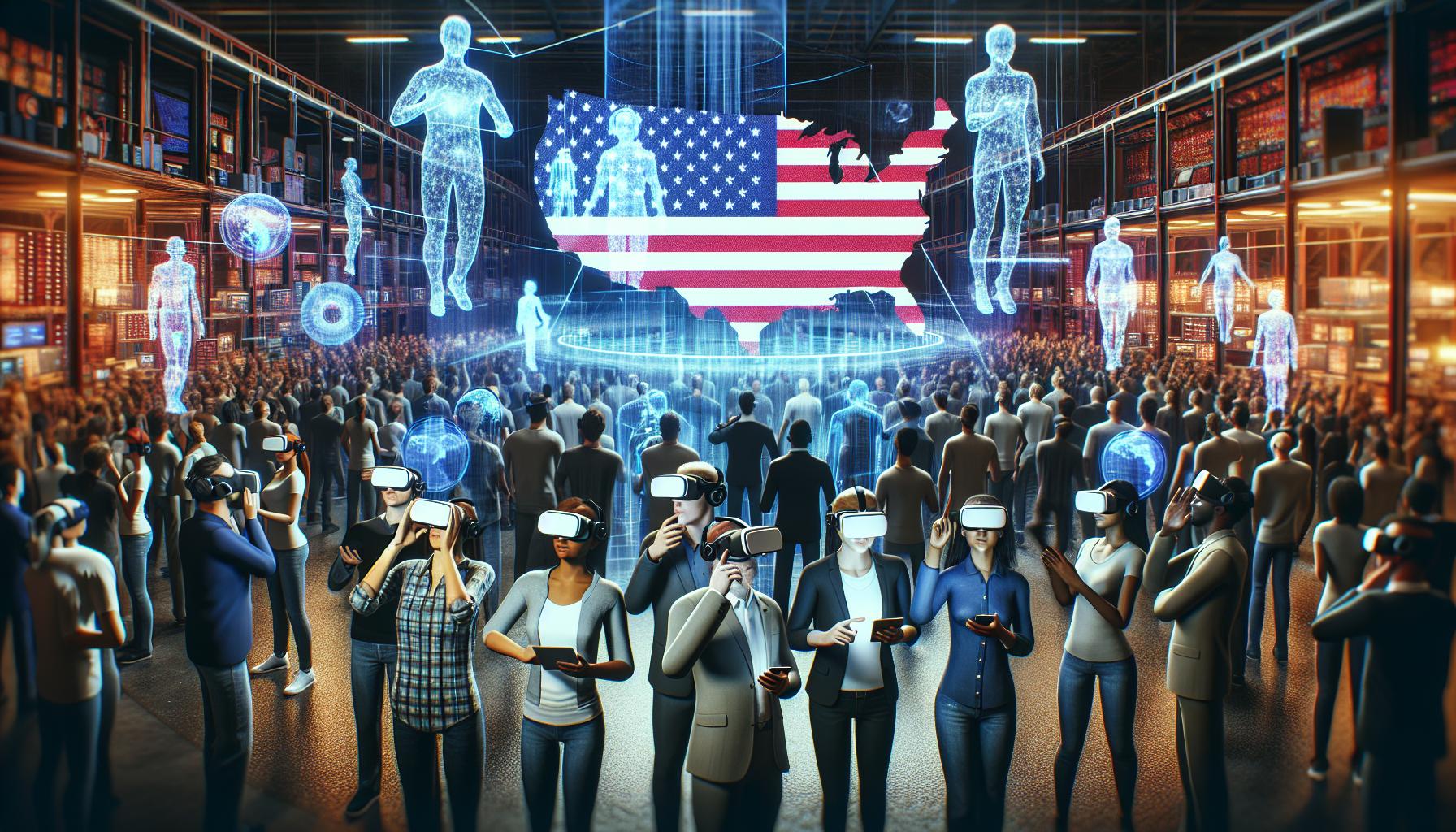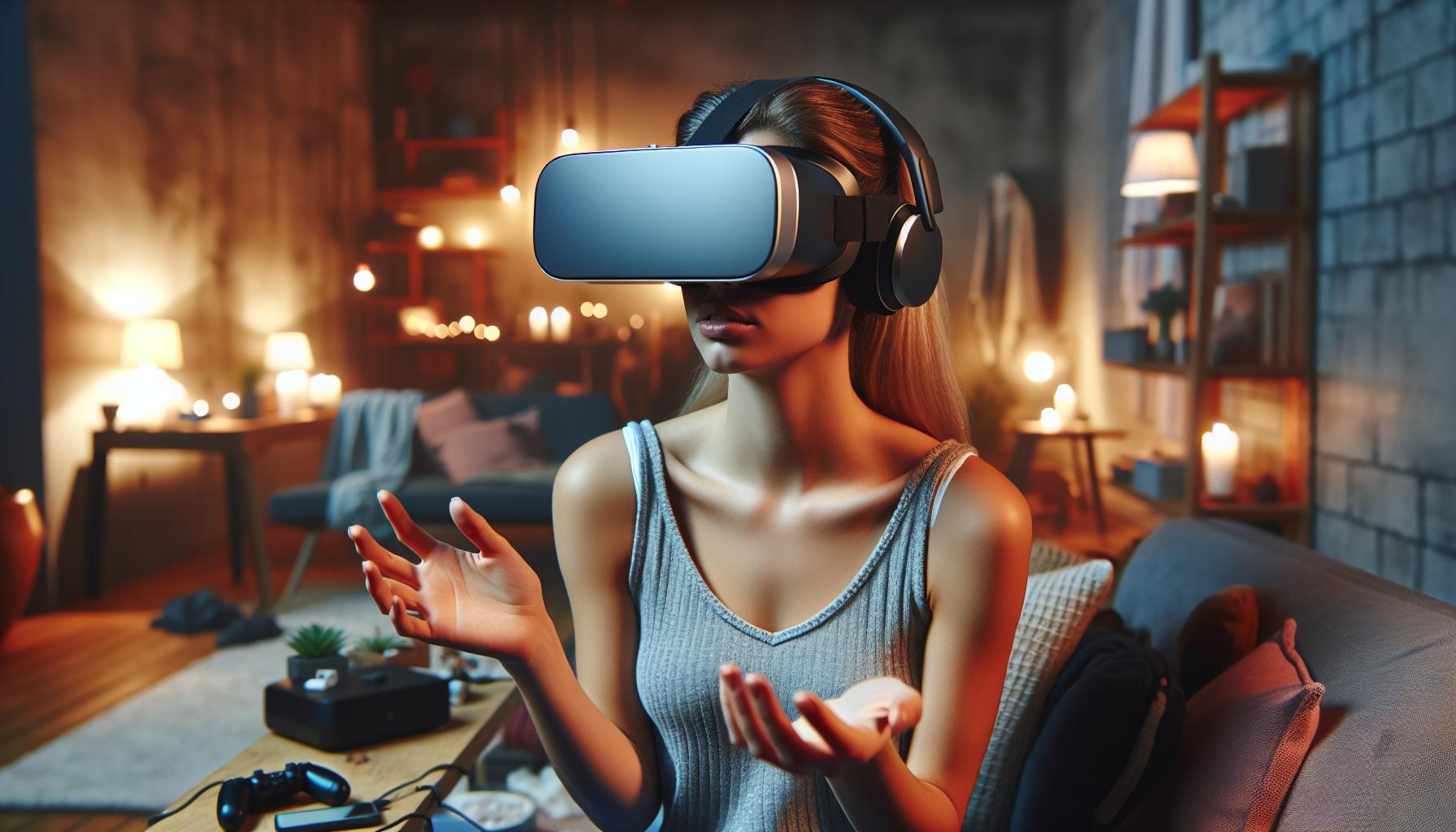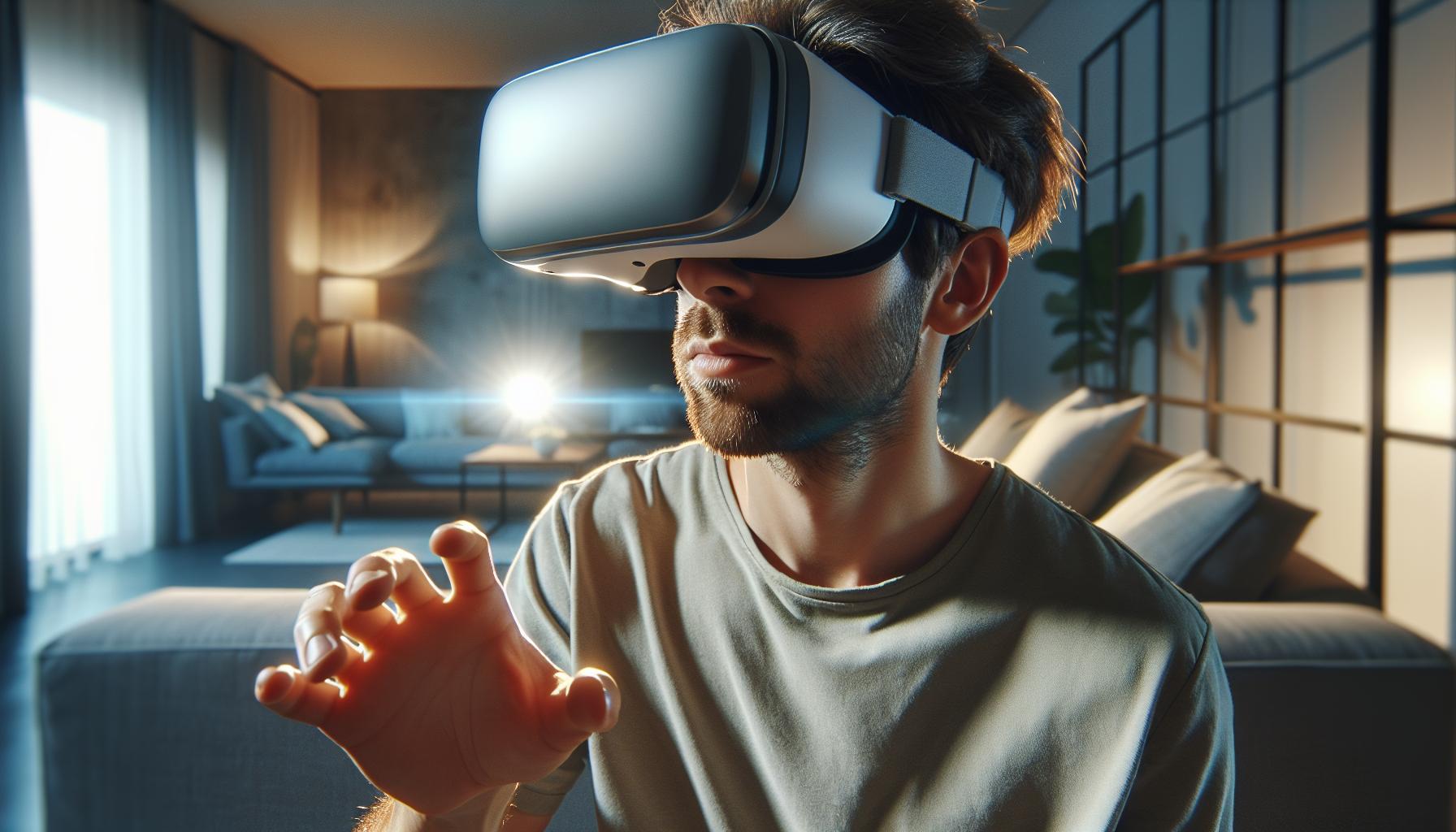As technology races forward at breakneck speed virtual reality (VR) is transforming from a sci-fi dream into our everyday reality. From gaming enthusiasts diving into digital worlds to professionals conducting virtual meetings VR’s influence continues to expand across industries and lifestyles.
The question isn’t just whether VR will replace reality – it’s already blending with our daily lives in ways we couldn’t have imagined a decade ago. While some worry about a Matrix-style future where humans plug into virtual worlds permanently others see VR as a tool that’ll enhance rather than replace our physical experiences. And let’s be honest who wouldn’t want to attend a work meeting as a floating cosmic unicorn or explore the depths of the ocean without getting wet?
Will Virtual Reality Replace Reality
Virtual reality technology has evolved significantly since its inception in the 1960s. The current VR landscape encompasses advanced hardware innovations coupled with sophisticated software applications across multiple sectors.
Key VR Technologies and Advancements
Modern VR systems integrate cutting-edge display technologies with 4K resolution per eye displays. The Meta Quest 3 features pancake lenses offering a 110-degree field of view while the Pimax Crystal achieves 2880×2880 pixels per eye. Motion tracking systems now utilize inside-out tracking with submillimeter precision through advanced camera arrays integrated into headsets. Haptic feedback technologies create tactile sensations through specialized gloves controllers such as bHaptics TactGlove providing individual finger tracking. Eye-tracking capabilities in devices like the PICO 4 Enterprise enable foveated rendering reducing processing demands by 30%.
Market Growth and Adoption Rates
The global VR market reached $21.8 billion in 2023 demonstrating a 32% increase from 2022. Consumer VR headset sales exceeded 15 million units with Meta Quest platforms capturing 63% market share. Enterprise adoption rates show 45% of Fortune 500 companies implementing VR training programs. The education sector experienced 89% growth in VR implementation across universities medical schools. Gaming remains the dominant VR application with 68% of VR software revenue while enterprise solutions account for 24% of the market.
| VR Market Metrics 2023 | Value |
|---|---|
| Global Market Size | $21.8B |
| YoY Growth | 32% |
| Consumer Headset Sales | 15M units |
| Meta Quest Market Share | 63% |
| Enterprise Adoption (Fortune 500) | 45% |
| Gaming Revenue Share | 68% |
The Growing Impact of VR on Daily Life

Virtual Reality transforms everyday activities through immersive digital experiences. The technology reshapes social connections enterprise operations education systems.
Social Interactions in Virtual Spaces
Virtual platforms create new forms of social engagement through avatar-based interactions. Users participate in virtual gatherings concerts meetups conferences from their homes using VR headsets. Platforms like VRChat Meta Horizon AltspaceVR host 3.5 million monthly active users engaging in shared experiences. These spaces enable real-time communication with spatial audio body language facial expressions through advanced motion tracking.
| Social VR Platform | Monthly Active Users |
|---|---|
| VRChat | 2.1 million |
| Meta Horizon | 800,000 |
| AltspaceVR | 600,000 |
Work and Education in the Metaverse
Companies integrate VR solutions for remote collaboration training professional development. Meta Workrooms Microsoft Mesh facilitate virtual meetings where participants interact with 3D models documents presentations. Educational institutions utilize VR for immersive learning experiences across subjects like anatomy chemistry astronomy.
| VR Implementation Stats | Percentage |
|---|---|
| Fortune 500 VR Training | 45% |
| Education Sector Growth | 89% |
| Enterprise Meeting Tools | 35% |
Virtual classrooms support hands-on learning through interactive simulations practical exercises digital labs. Remote teams collaborate in shared virtual workspaces reducing travel costs increasing productivity engagement.
Psychological Effects of Extended VR Use

Extended virtual reality usage creates significant psychological impacts on users through prolonged immersion in digital environments. Research from the Virtual Reality Medical Institute indicates that VR exposure lasting more than 3 hours daily affects cognitive processing patterns.
Digital Escapism Concerns
VR environments provide increasingly compelling alternatives to real-world interactions. Studies by the American Psychological Association reveal that 42% of regular VR users spend 4+ hours daily in virtual spaces, replacing physical social connections. The immersive nature of VR creates dopamine-driven feedback loops, similar to social media addiction patterns. Data from Stanford’s Virtual Human Interaction Lab shows that 35% of frequent users report difficulty distinguishing virtual memories from real ones after 6 months of regular use. Extended VR sessions correlate with decreased real-world social engagement, with users reporting a 28% reduction in face-to-face interactions.
Mental Health Implications
Clinical research identifies specific mental health patterns among long-term VR users. The Journal of Behavioral Addictions reports that 31% of daily VR users experience symptoms of dissociation. Depression rates increase by 24% among individuals spending 5+ hours daily in virtual environments. Anxiety disorders manifest in 28% of heavy users when transitioning between virtual and real environments. The Virtual Reality Medical Center documents that 45% of regular users report altered sleep patterns related to extended VR sessions. Cognitive behavioral therapy specialists observe a 37% increase in reality-testing difficulties among individuals who prioritize virtual social interactions over physical ones.
Reality vs. Virtual Reality: Core Differences

Physical reality provides full sensory engagement through natural stimuli while virtual reality creates digital simulations with technological limitations. These fundamental differences shape how humans interact with both environments.
Sensory Limitations of VR
Current VR technology captures only 2 of the 5 primary human senses: sight and sound. The Quest Pro headset displays 2160 x 2160 pixels per eye, reaching only 37% of human visual acuity. Haptic feedback systems offer limited touch simulation through vibration patterns, failing to replicate complex textures or temperature variations. Advanced VR systems process audio at 48kHz with spatial positioning, yet struggle to match the human ear’s ability to detect subtle sound variations between 20Hz to 20kHz. Motion tracking operates at 90Hz refresh rates, creating a 11ms lag between physical movement and virtual response.
The Human Need for Physical Connection
Physical interactions trigger oxytocin release, promoting emotional bonding and trust development. Research shows face-to-face conversations generate 30% more neural synchronization between participants compared to virtual interactions. Touch receptors in human skin process 1,000 sensations per second, creating complex emotional responses impossible to replicate in VR. Social studies indicate physical presence increases empathy by 65% through unconscious mimicry of facial expressions and body language. Group activities in physical spaces produce 45% higher levels of engagement than virtual equivalents.
The Future Relationship Between VR and Reality
Virtual reality continues to evolve alongside physical reality, creating new pathways for human interaction and experience. The integration of these two realms shapes a dynamic future where digital and physical experiences complement each other.
Augmented Reality Integration
AR technology merges virtual elements with physical environments, creating a seamless blend between digital and real worlds. Major tech companies invest $8.5 billion annually in AR development, focusing on applications like spatial computing and mixed reality experiences. Leading platforms such as Apple Vision Pro and Microsoft HoloLens demonstrate advanced environmental mapping capabilities, overlaying digital information onto physical spaces with 95% accuracy. Enterprise sectors adopt AR solutions for maintenance, design visualization and remote assistance, reporting a 34% increase in workflow efficiency.
Potential Hybrid Lifestyles
Hybrid lifestyles emerge as people navigate between virtual and physical spaces throughout their daily activities. Organizations implement flexible work models combining virtual collaboration with in-person meetings, resulting in a 27% productivity increase. Digital platforms enable users to participate in virtual concerts, conferences and social gatherings while maintaining physical world connections. Studies indicate that 65% of professionals alternate between VR meetings and face-to-face interactions, creating balanced engagement patterns. Educational institutions incorporate hybrid learning models, combining virtual simulations with hands-on laboratory work to enhance student comprehension by 42%.
The Current State of Virtual Reality
Virtual reality won’t replace reality but will continue to transform how humans interact with digital environments. The technology’s rapid advancement and growing adoption across various sectors demonstrate its potential to enhance rather than substitute real-world experiences.
While VR offers unprecedented opportunities for connection education and entertainment it can’t fully replicate the complex sensory experiences and emotional bonds formed in physical reality. The future lies in striking a balance between virtual and physical worlds creating a hybrid lifestyle that leverages the best of both realms.
The key to successful VR integration lies in using it as a tool to augment human experiences while maintaining meaningful connections in the physical world. This symbiotic relationship between virtual and physical reality will shape the next chapter of human interaction and technological advancement.



